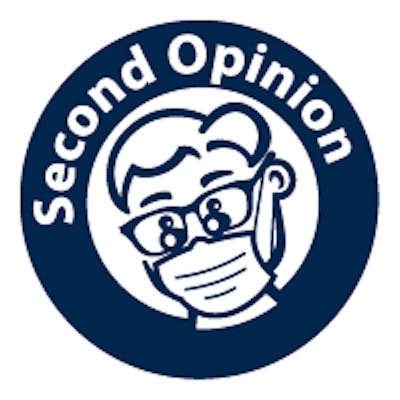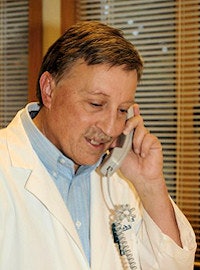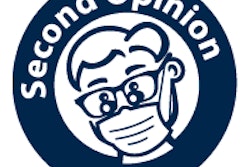
We've all heard the clichés about dental hygienists. "They're all self-absorbed prima donnas." "Hygienists won't work with others on the dental team." "If they think they know as much as doctors, why don't they go out and earn a dental degree?"
Similarly, derogatory clichés are foisted on dentists. "They're all part of the same old boys' club." "Dentists are greedy and rich. They refuse to share the wealth." "Dentists think they know it all, and they absolutely don't."
 Deborah Stewart, RDH, MBA.
Deborah Stewart, RDH, MBA.Those sorts of bogus phrases may or may not have had some validity a decade earlier. Today, those views are not only patently false, but damage the future of both professions. Let's examine the realities.
Since the economic recession of 2007-2008 and even earlier, consumer spending for dental services is either down or has been stagnant. Appointment books are often peppered with openings and short-notice cancelations. The insurance industry seems to be either lowering fee schedule rates for services or holding to set fees of many years. Employers are purchasing ever more discounted plans for employees, with declining fees for services. The Patient Protection and Affordable Care Act (ACA), which promised to be a potential boom to the dental industry, has thus far shown to be largely a hapless boondoggle.
 Michael W. Davis, DDS.
Michael W. Davis, DDS.The dental profession is experiencing hard times. Recent graduates are burdened with horrific debt loads. Senior doctors with flat or declining production revenues often have no capacity to take on a junior associate, and many have been laying off or cutting back hours for hygienists.
The only viable employment avenue for many numbers of dentists and dental hygienists is with dental service organizations (DSOs). Such employment often comes with its own set of problems, as evidenced by state and federal government settlement agreements with DSOs and state workplace labor violations.
Insurance industry influence
Fees for hygiene services have been kept artificially low for many years in our opinion, and insurance remuneration at "100% coverage for preventive services" is often below the cost to deliver those services. In many practices, hygiene services have become an economic loss leader. Initial low cost gets consumers through the door, in hope that they will purchase other, more fiscally viable dental services. This economic reality has had a devastating impact specifically on the dental hygiene profession.
Earlier in the history of dentistry, dental hygienists were primarily graduates of four-year university or college programs. Later, that changed to two-year associate degree programs. Increasingly, we see hygienists graduate from 18-month private training institutes. Efforts are now being made to change state dental practice acts to allow for on-the-job training of dental assistants, as provided in Alabama. The downward spiral in educational qualification is highly evident. The dental industry demanded cheap hygienist labor to offset low fees for hygiene services.
Compounding this decline in the hygiene profession is the unlawful utilization of dental assistants for hygiene services. This is particularly seen in numbers of private, Medicaid-focused clinics and certain DSOs. Organized hygienist associations, organized dentistry, state dental regulatory boards, and Medicaid authorities all seem to ignore the issue. Taxpayers and disadvantaged patients are cheated. Hygienists lose out on potential employment, while those in authority look the other way.
Influence of some in corporate dentistry
Certain DSOs have dissolved the historical connection between dentists and dental hygienists. Unlicensed corporate managers, and not licensed doctors, may be directing patient care. Doctors and hygienists may be required to work under a production quota system. Patients may be upsold unnecessary treatment and verbally "arm-twisted" into highly usury third-party payment contracts. Hygienists in these situations are not responsible under the direction of a doctor, but to unlicensed corporate management. The doctor/patient relationship has been violated by a corporate third party, without the knowledge or consent of the patient.
Some of the more common unethical practices in dental hygiene include hard sales of rotary toothbrushes, sales of intrasulcular antibiotic therapy prior to the results of scaling and root planing, invention of sulcular probing depths to qualify for quadrant scaling for initial periodontal therapy, and ineffective 20- to 30-minute adult hygiene prophylaxis appointments, inclusive of time for exam, oral hygiene instruction, radiographs, and operatory infection control setup and takedown. If either the hygienist or doctor objects, he or she will quickly be shown the door by management. All the while, state regulators and organized dental and hygienist associations deny the problem.
Solutions
Steps must be taken to reverse this downward spiral. One would ideally like to look to organized dental and hygiene associations for assistance. However, they increasingly are being sponsored by DSOs and the insurance industry, and they are too frequently out of touch with the realities of their diminishing membership in our opinion.
“It no longer serves either the dental profession or dental hygienist profession to remain in gridlocked conflict.”
Enhancing the dental industry should be the mission of organizations, but in times of diminishing membership, fewer members mean the few make decisions for the total population of dentists and dental hygienists. It is a process, but enhancement of the industry requires keeping the priority of dentists and dental hygienists in alignment, so the patient is better served.
One might also like to engage state and federal regulators to actually step up and enforce statutes against unlicensed practice of dentistry and dental hygiene. Too often, these authorities are either too lazy and inept, or hiding under their desks with fear of DSO's legal counsel. Thus, grassroots dentists and hygienists must step forward.
First, let's allow licensed dental hygienists the ability to gain certification in the delivery of local anesthesia through an appropriate training process. This should be universal through all states. Licensed nurses deliver injections, establish IV lines, and take blood samples, all under the direction of a doctor's orders. The parallel with dentistry is no different.
Second, let's answer the questions about dental therapists. There exists a push by some, especially in the public health dental community, for the establishment of dental therapists. While there is debate doubting the need because of the increasing numbers of underemployed dentists, there is seemingly a common thread in medicine with nurse practitioners.
Nurse practitioners have expertise in diagnosing and treating health conditions with an emphasis on disease prevention. Nurse practitioners are trained to provide health promotion and maintenance through the diagnosis and treatment of acute illness and chronic conditions.
Today's dental therapists are not healthcare professionals in this sense, because of their highly limited training of only 18 months out of high school (nurse practitioner programs require a degree or diploma in registered nursing and are similar to a master's program). Support could be given for a licensed dental therapist profession, with limited restorative and surgical responsibilities, after 18 months of advanced training and subsequent to a four-year professional hygiene degree (not directly out of high school or a limited hygiene program).
The third aspect of the solution is to work to elevate the remuneration and public's value for dental hygiene services. This is usually the foundation on which restorative and prosthetic dental care is built. If the base isn't solid, the patient's dental systems may easily collapse like a house of cards. This means directly confronting the insurance industry and the weighting of Medicaid fee schedules.
Conclusion
It no longer serves either the dental or dental hygienist profession to remain in gridlocked conflict. It probably never did. Since leadership in the dental industry and government authorities are engaged in distant agendas (often self-serving), rank-and-file dentists and hygienists must collaborate for the common good of the American healthcare public.
Specifically, that means meeting with legislators and policymakers. That means public speaking or being interviewed by the media. It further necessitates organizing with small groups of like-minded fellow professionals. Individual dentists and dental hygienists must reach out to one another for the betterment of the public welfare.
Deborah Stewart, RDH, MBA, is a dental hygiene healthcare professional and professional certified coach with expertise in organizational management. She is the author of the 2014 book Perspectives on Dentistry: An Insider's Guide to the Professional Business of Dental Hygiene (available here).
Michael W. Davis, DDS, maintains a private general dental practice in Santa Fe, NM. He serves as chairperson for the Santa Fe District Dental Society Peer Review. He is also active in expert witness legal services.
The comments and observations expressed herein do not necessarily reflect the opinions of DrBicuspid.com, nor should they be construed as an endorsement or admonishment of any particular idea, vendor, or organization.



















